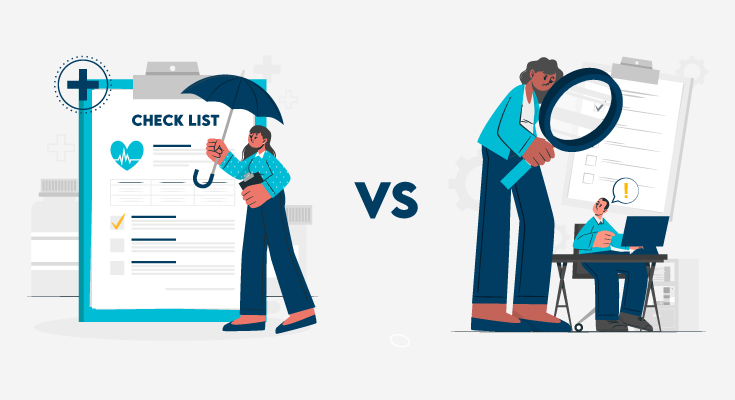Maintaining the integrity of online accounts is more than challenging in today’s time. Regulatory bodies keep writing more and more laws to help businesses keep themselves and their customers secure.
Financial institutions and FinTechs keep building cyber risk strategies to protect their customers from fraudsters online. This is one of the reasons why businesses need to understand the difference between due care and due diligence.
Understanding the difference between these can help financial institutions manage risk better.
What is Due Care?
Due care is providing just the right amount of care based on sufficient data available. Sometimes, due care is also defined as sufficient care, implying a person hasn’t been careless and hasn’t violated any laws.
Apart from legal terms, due care focuses on whether or not someone’s actions didn’t contribute to harm or violate the law.
In due care, organizations focus on whether or not a customer did something they were supposed to do.
What is Due Diligence?
Due diligence has a significantly different meaning than due care. Due diligence focuses on what a reasonable person would do based on the type of situation they’re in.
What is Due Care in Cybersecurity?
Due care in Cybersecurity means taking reasonable steps to protect your business’s reputation, finances, and legal interests. Based on some most common cybersecurity frameworks, you can set some basic due care practices, such as:
- Know Your Assets
It’s impossible to protect devices and users that businesses don’t know exist. To ensure you’re taking the right due care steps, you need to catalog all these:
- Data assets, including PII and IP.
- Storage locations, including on-premises and cloud.
- Devices include IoT devices, routers, and switches.
- Your users.
- Build Your Custom Cybersecurity Policy
Every brand should have a cyber security policy to protect its users and themselves from online fraud. Before you write your policy, you should make a list of all the weak points in your organization. A risk assessment can help you build a policy that can prevent cyber fraud.
A great cybersecurity policy should outline the responsibilities of senior management and the board.
- Continuous Monitoring
Fraudsters love to evolve their techniques. They keep finding new ways to bypass security measures. To protect your organization from these developing measures of fraud, you need to continuously monitor the cybersecurity measures set in place.
As a part of the process, you need to make sure your team also becomes aware of new risks and weak points in the system.
- Build Incident Response Process
Cybersecurity risks can and will happen. Creating, testing, and reviewing your threat response process means you’re taking cyber security seriously.
You have to make sure that the response team includes all the right people, and that there is a minimum response.
- Create an Audit Trail
To protect your organization from risks, you need to build an audit trail. Almost every cyber security or privacy law requires organizations to undergo independent assessments of their programs.
What is Due Diligence in Cyber Security?
Due diligence in cyber security is the process of identifying cyber risks that come with third-party vendors. Due care means managing the risks your organizations have control over. Due diligence on the other hand focuses on managing risks that third-party vendors bring to your organization’s ecosystem.
To build a great due diligence process in cyber security, follow these steps:
- Identify Your Vendors
Vendor fraud is one of the largest types of fraud that businesses come across. Not conducting “Know Your Vendor” while vendor onboarding can lead to fraud risks. Use DIRO vendor verification technologies to verify:
- Contractors
- Cloud services providers
- Operating systems
- Applications
Having a full image of the process can help you prevent vendor fraud.
- Build Vendor Risk Management Policy
Similar to a cyber security policy, businesses need to build a vendor risk management policy. Your policy should include:
- Defining appropriate controls
- Setting metrics for measuring third-party compliance
- Continuously monitoring vendor security posture
- Monitor Continuously
A primary part of vendor fraud management due diligence is knowing the potential security risks your vendors pose. Before you onboard a vendor, you should do a risk review that includes verifying vendor identity.
Once you’ve onboarded vendors, it’s essential to ensure you monitor them continuously to ensure they don’t do anything they’re not supposed to be doing.





